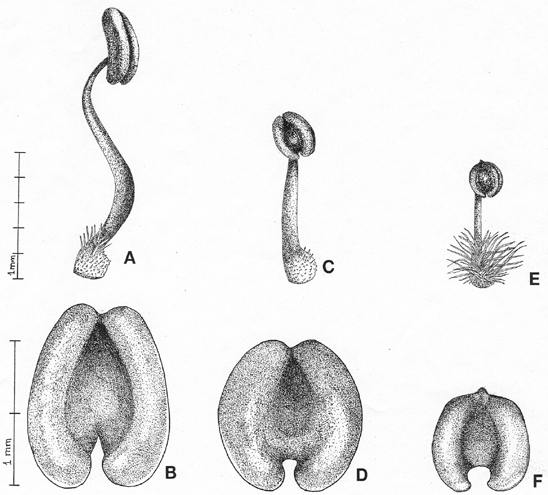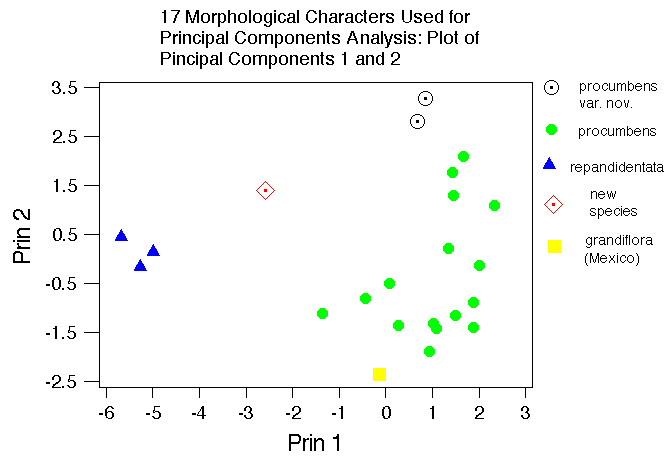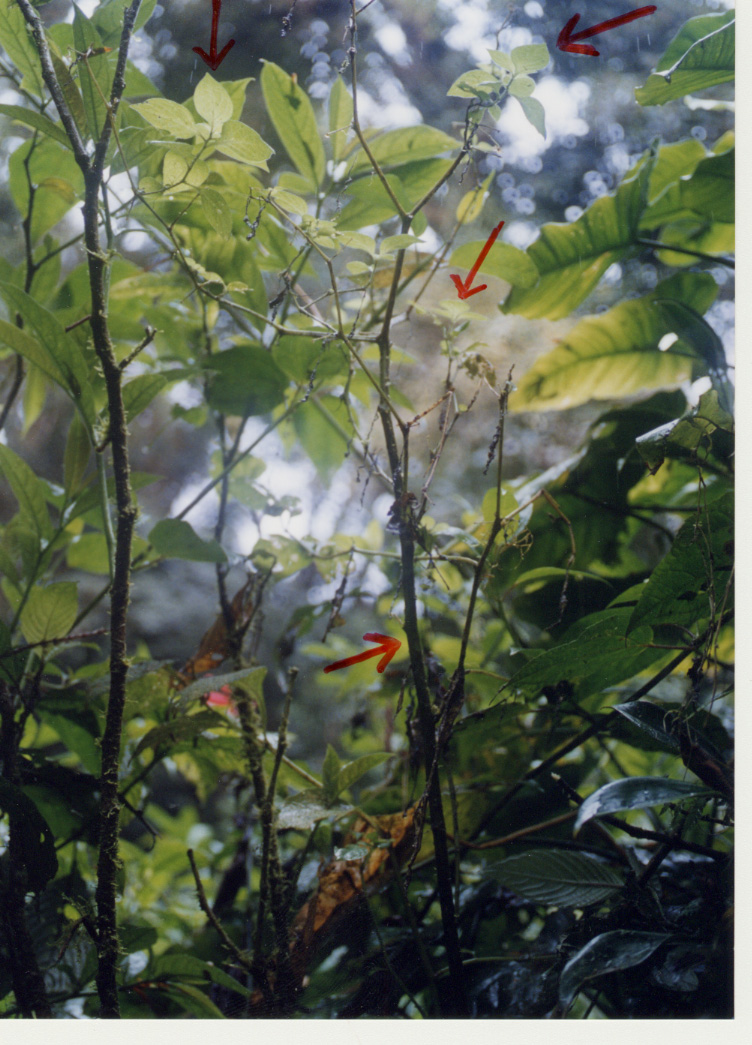
Jaltomata of Costa Rica |
revised 18 Sep 2014 |
| Link to Jaltomata homepage | The information on this page may be cited as a communication with professor Thomas Mione, Central Connecticut State University, Biology Department, Copernicus Hall, 1615 Stanley Street, New Britain, Connecticut 06050-4010, United States of America. | Link to Jaltomata of Arizona USA, Mexico and Central America |
Key from Mione and Yacher (2005) 1. Style straight; calyx (at flowering, in Costa Rica) green with purple lobe tips and/or purple main veins; anthers of uniform size, mucronate (in Costa Rica)(Fig. F); mature fruit partially hidden by calyx on some collections; 1000 -- 2900 m. J. procumbens (Cav.) J. L. Gentry 1. Style curved; calyx at flowering uniformly green; anthers neither mucronate nor mucronulate (Figs. B, D below), those of a flower vary in size (most evident during the first day the flower is open when anthers remain undehisced); fruit fully exposed (the calyx does not hide it) in a view perpendicular to the pedicel at the height of the fruit. ................................................ 2 2. Leaves membranous, to 20 cm long; filaments curved to sigmoid (Figs. A, C below); stigma shallowly grooved to bilobed; flowers pistillate for a day and then functionally perfect; 400 -- 1200 m. 2. Leaves somewhat coriaceous, to 30 cm long; filaments straight or nearly so (Fig. C below); stigma with a very shallow medial groove; flowers functionally hermaphroditic (perfect) when they open; 0 -- 320 m. |
 |
 |
See
|
Brief Description of Field Work in Costa Rica, January 2000 Earlier botanists had recognized a single species of Jaltomata in Costa Rica, even though collections of this genus in Costa Rica range from sea level to nearly 3000 m of elevation. From earlier study of herbarium specimens I suspected the presence of two to three species in Costa Rica, but needed to go to the country to investigate. Leon Yacher and I made traditional herbarium specimens, preserved flowers in alcohol, and dried leaves for extraction of DNA for molecular systematics. Field work, molecular laboratory work after returning, and comparative morphology revealed three distinct and defendable species, one of which turned out to be new to science. Yacher and I are among the first scientists to see Jaltomata growing at its extremes of environmental tolerance in Costa Rica: Bill Haber showed me an epiphytic member of this genus (photo below, J. procumbens) in the very wet high-elevation forest. Yacher and I collected what turned out to be a new species, J. darcyana, on the West coast near sea level in a forest so hot and dry that the trees seasonally lose their leaves. That this genus grows in Costa Rica at these extremes had not previously been reported. The field work was funded by a National Geographic Society grant awarded to T. M. |
 |
Jaltomata procumbens growing as an epiphyte at Monteverde, Costa Rica. Special thanks to Bill Haber for bringing me to this exciting plant. Photo by Thomas Mione, taken during an expedition funded by the National Geographic Society. |